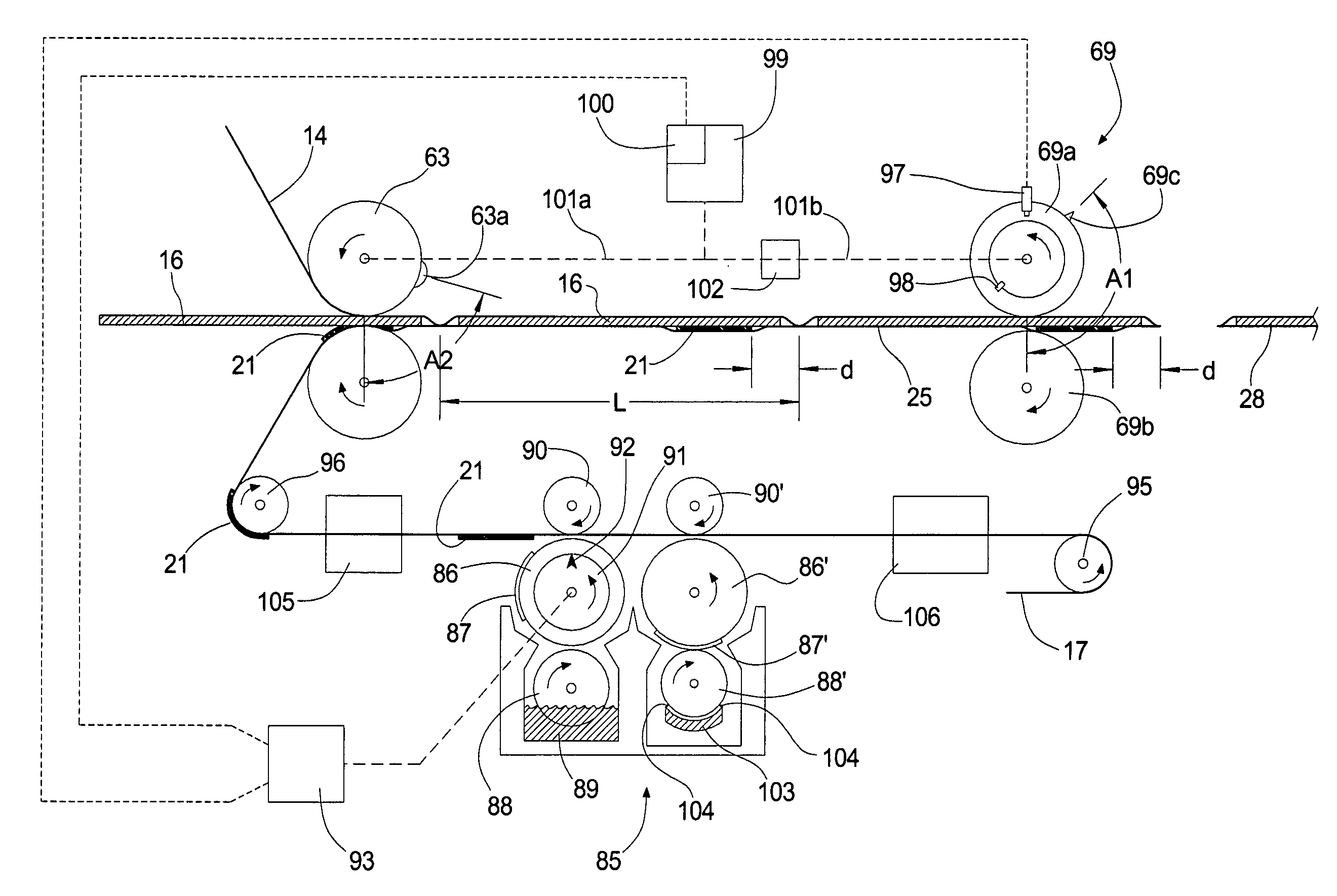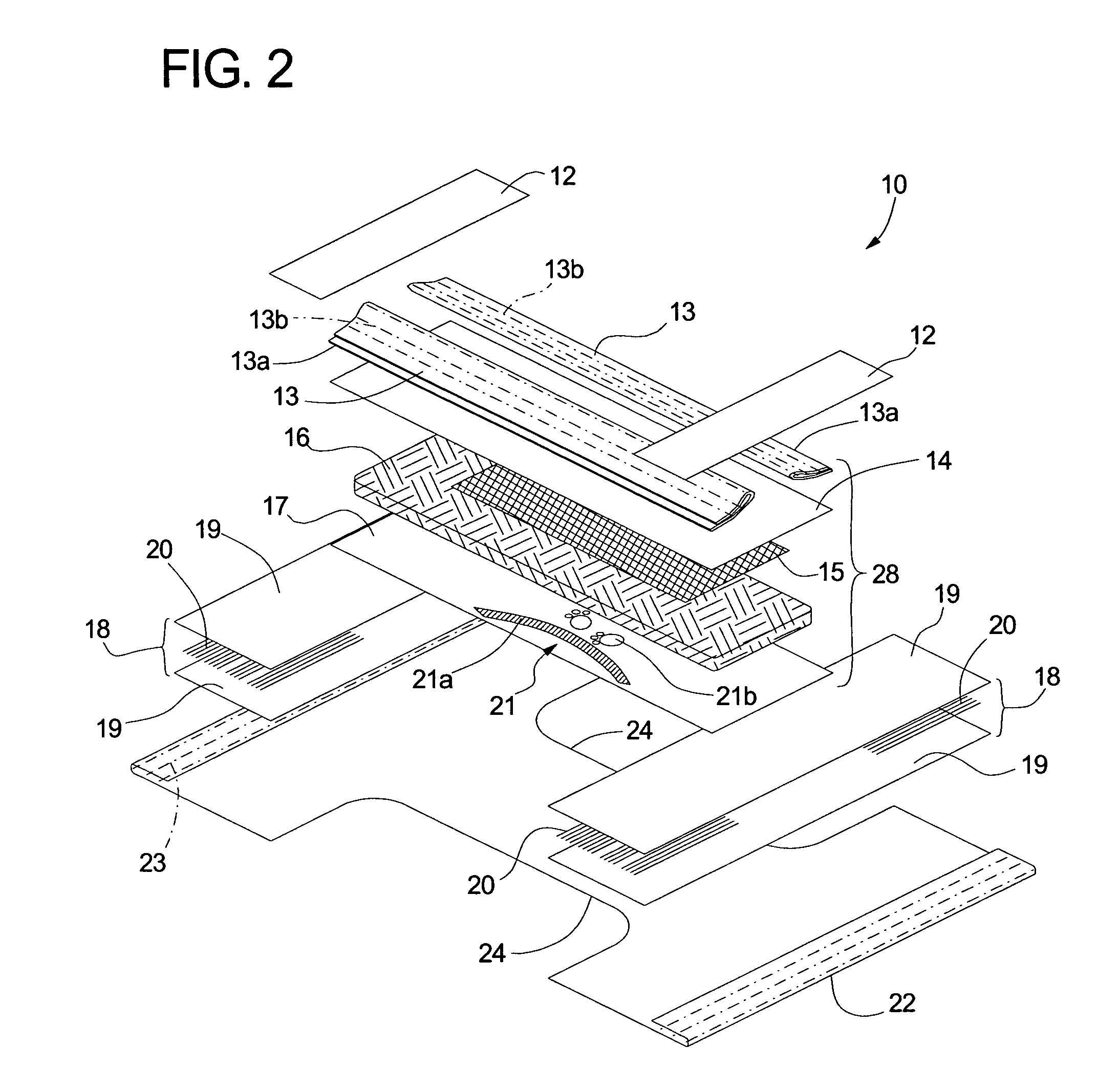System and method for incorporating graphics into absorbent articles
a technology of absorbent articles and graphics, applied in the direction of mechanical control devices, process and machine control, instruments, etc., can solve the problems of affecting the aesthetics of the product, requiring complex feed-back control systems, and not desirabl
- Summary
- Abstract
- Description
- Claims
- Application Information
AI Technical Summary
Benefits of technology
Problems solved by technology
Method used
Image
Examples
Embodiment Construction
[0031]As used herein, the terms “absorbent garment,”“garment,”“absorbent article” and “article” refer to garments that absorb and contain exudates, and more specifically, refers to garments that are placed against or in proximity to the body of the wearer to absorb and contain various exudates discharged from the body. A non-exhaustive list of examples of absorbent articles includes diapers, diaper covers, disposable diapers, training pants, feminine hygiene products, and adult incontinence products. The term “disposable absorbent garment” refers to absorbent garments that are intended to be discarded or partially discarded after a single use (i.e., they are not intended to be laundered or otherwise restored or reused).
[0032]The present invention can be used with all of the foregoing classes of absorbent articles, without limitation, whether disposable or otherwise. These classifications are used interchangeably throughout the specification, but are not intended to limit the claimed...
PUM
| Property | Measurement | Unit |
|---|---|---|
| diameter | aaaaa | aaaaa |
| angular velocity | aaaaa | aaaaa |
| diameter | aaaaa | aaaaa |
Abstract
Description
Claims
Application Information
 Login to View More
Login to View More - R&D
- Intellectual Property
- Life Sciences
- Materials
- Tech Scout
- Unparalleled Data Quality
- Higher Quality Content
- 60% Fewer Hallucinations
Browse by: Latest US Patents, China's latest patents, Technical Efficacy Thesaurus, Application Domain, Technology Topic, Popular Technical Reports.
© 2025 PatSnap. All rights reserved.Legal|Privacy policy|Modern Slavery Act Transparency Statement|Sitemap|About US| Contact US: help@patsnap.com



